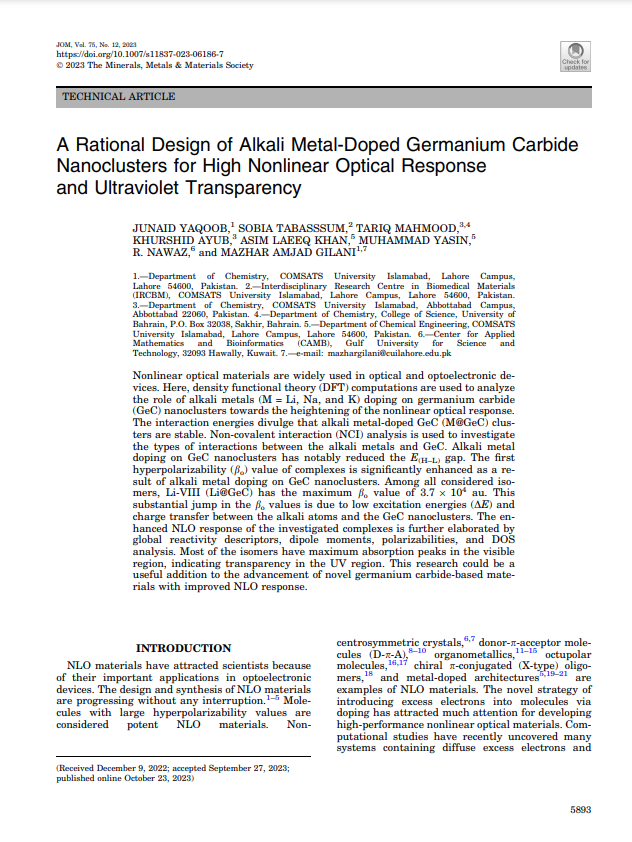Document
Identifier
https://digitalrepository.uob.edu.bh/id/e3af4acd-d5ba-4612-8edd-05e431671166
A Rational Design of Alkali Metal-Doped Germanium Carbide Nanoclusters for High Nonlinear Optical Response and Ultraviolet Transparency
Linked Agent
Tabasssum, S, Author
Mahmood, T, Author
Ayub, K, Author
Khan, A.L, Author
Yasin, M, Author
Nawaz, R, Author
Gilani, M.A, Author
Country of Publication
Kingdom of Bahrain
Place Published
Sakhir, Bahrain
Publisher
University of Bahrain
Date Issued
2023
Language
English
English Abstract
Abstract:
Nonlinear optical materials are widely used in optical and optoelectronic devices. Here, density functional theory (DFT) computations are used to analyze the role of alkali metals (M = Li, Na, and K) doping on germanium carbide (GeC) nanoclusters towards the heightening of the nonlinear optical response. The interaction energies divulge that alkali metal-doped GeC (M@GeC) clusters are stable. Non-covalent interaction (NCI) analysis is used to investigate the types of interactions between the alkali metals and GeC. Alkali metal doping on GeC nanoclusters has notably reduced the E(H–L) gap. The first hyperpolarizability (βo) value of complexes is significantly enhanced as a result of alkali metal doping on GeC nanoclusters. Among all considered isomers, Li-VIII (Li@GeC) has the maximum βo value of 3.7 × 104 au. This substantial jump in the βo values is due to low excitation energies (ΔE) and charge transfer between the alkali atoms and the GeC nanoclusters. The enhanced NLO response of the investigated complexes is further elaborated by global reactivity descriptors, dipole moments, polarizabilities, and DOS analysis. Most of the isomers have maximum absorption peaks in the visible region, indicating transparency in the UV region. This research could be a useful addition to the advancement of novel germanium carbide-based materials with improved NLO response.
Title of Periodical
JOM
Member of
Category
Article

